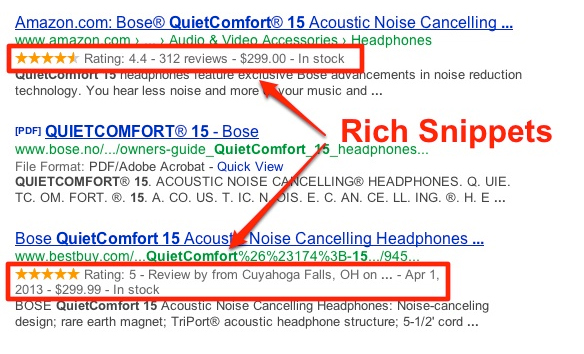
Google’s ultimate objectives are three-fold:
1) Provide the most relevant and trust-worthy search query results.
2) Ensure users find the best, most transparent and well-reviewed information possible.
3) Offer the maximum number of informative results.
It was with these goals in mind that the idea of the “rich snippet” was introduced on May 12th, 2009. Rich snippets can be installed for all manner of business websites, as long as the site’s pages incorporate open standards such as microdata, microformats, or RDF’s.
Google recognizes markup for the following content types: 
- Reviews
- People
- Products
- Businesses & Organizations
- Recipes
- Events
- Music
- Videos
Before creating markup for the above content however, Google authorship must be established between the website and a Google+ user profile. This provides a verified connection linking content on the site to the creator of that content, or in other words, the author. This gives Google the ability to identify human-created content, content that is relevant to a business, and most recently published content, and distinguish it from what otherwise isn’t quite up to par.
Recently however, there have been changes made to the authorship creation method.
Previously, in order to establish authorship, a profile photo with a recognizable headshot was required as part of your Google+ profile. Yet during the 2nd quarter of 2014, John Mueller announced on Google+ that the company had decided to remove profile pictures as a requirement for authorship. This change was brought about to avoid cluttering-up the visual design of Google’s search result pages. Mueller did mention though that the click-through-rate post clean-up is similar to what it was before.
This could potentially pose a great set-back for many businesses, but Google+ still plays a very vital role in user search results:
1) Author’s name still appears as a byline next to search results.
2) Participating in authorship helps build author rank.
3) Creating authorship helps with building markup for the other types of rich snippets mentioned above; in other words, providing access to more online data for your customers.

